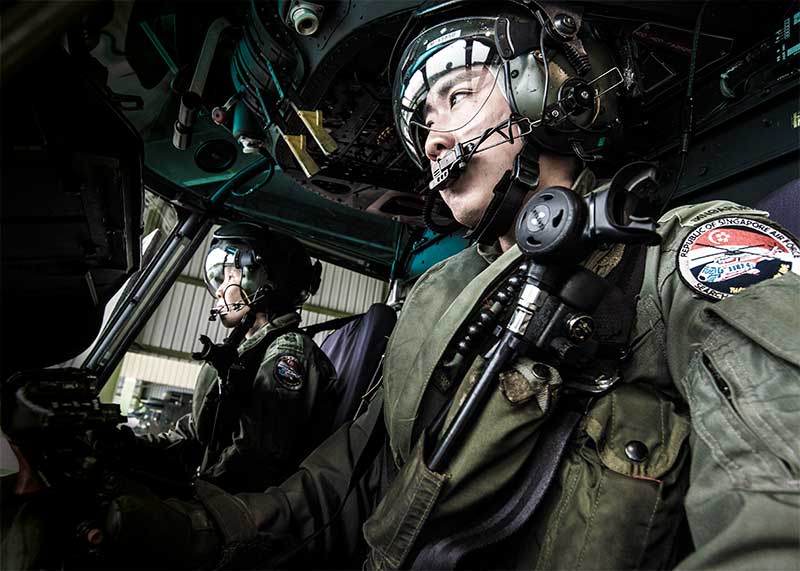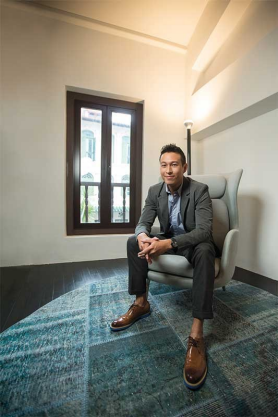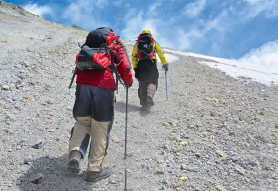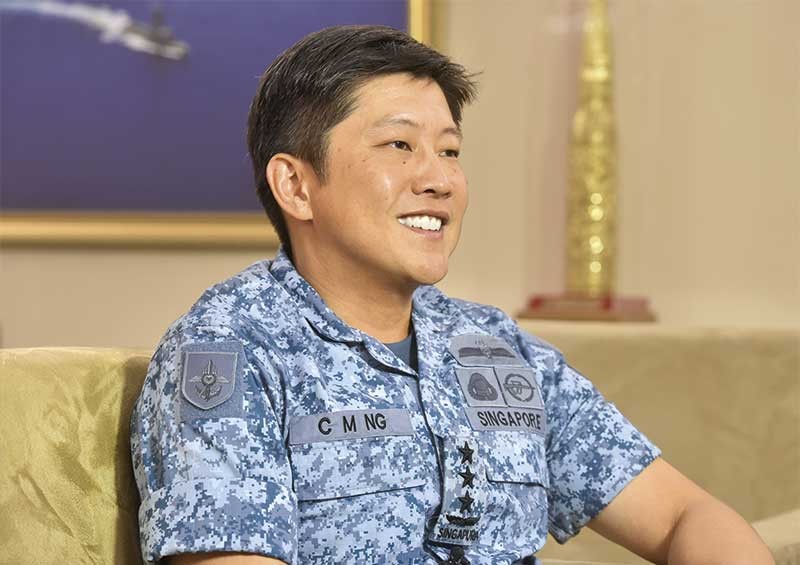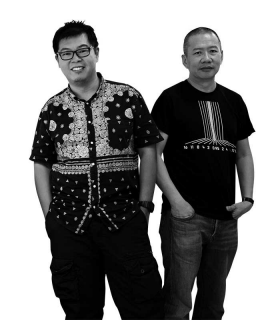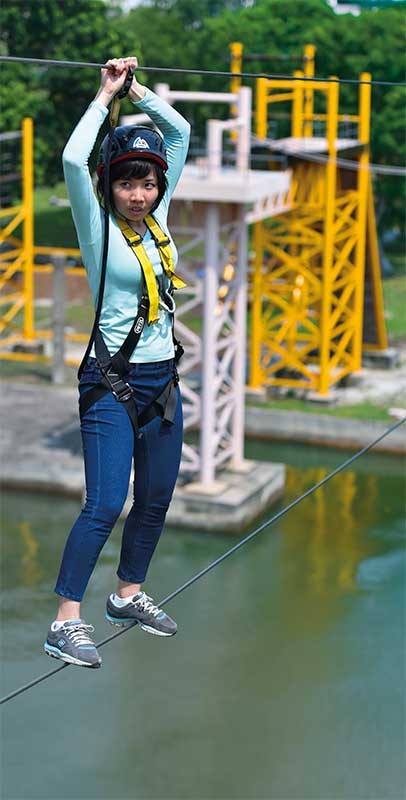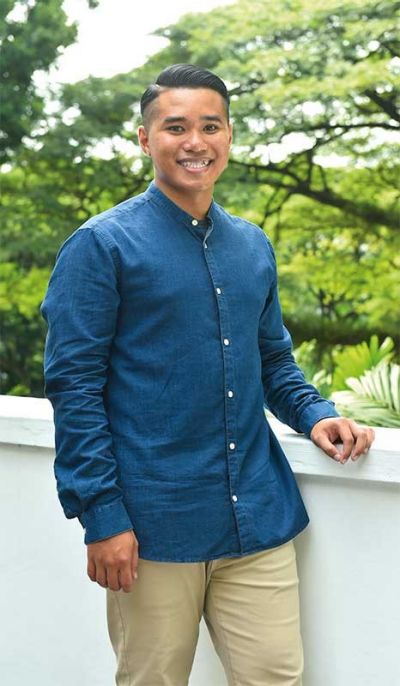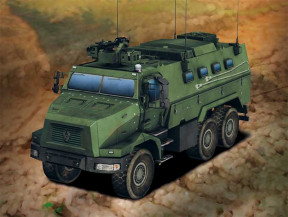From conducting emergency airlifts off Singapore waters to helping countries in need, the RSAF is always ready when called upon to serve.
Think of the Air Force and images of fighter aircraft roaring overhead, precision munitions striking their targets and aerial dogfights often come to mind. But that is only one slice of the Republic of Singapore Air Force (RSAF).
In peacetime, the RSAF serves in different capacities - from airlifting injured soldiers, to rescuing people stranded out at sea, to providing aid in the aftermath of natural disasters.
In recent years, military forces have been increasingly called upon for Humanitarian Assistance and Disaster Relief (HADR) efforts. Speaking at the World Humanitarian Summit Global Forum on Humanitarian Civil-Military Coordination on 13 Apr, Minister for Defence Dr Ng Eng Hen noted that "(this is) not surprising because 70 percent of natural disasters occur within Asia, and within a seven-hour flight time from Singapore".
He added: "No other organisations, whether locally or globally, can respond with the speed and effectiveness that militaries do in the immediate aftermath of any disaster."
On a mission to save lives
To the men and women of 125 Squadron (SQN), the blare of the scramble siren is more than just the start of a mission; it means that a life somewhere is in distress. It also means that they are the casualty's quickest - and sometimes only - chance of survival.
The squadron operates the Super Puma helicopters and is a dedicated part of the Singapore Armed Forces (SAF) search and rescue (SAR) operations. Maintaining a 24/7 standby for round-the-clock emergencies, the squadron supports the SAF in locating and evacuating injured or collapsed soldiers.
"If there are casualties during training and there are problems activating ground means to evacuate them to the hospital, we will be activated," said Lieutenant Colonel (LTC) Christine Sim, Deputy Commanding Officer (CO) of 125 SQN.
While its primary commitment is to support the SAF, the squadron has also been called upon to assist in civilian crises, both locally and internationally. This includes sea collisions and civil aircraft in distress. The squadron was involved in the search for the crashed AirAsia flight QZ8501 last December.
Non-stop adrenaline rush
From the moment the siren is sounded, it is fast and furious for the SAR team. As the medical team loads up their equipment, the pilots and Aircrew Specialists (ACSs) suit up and prepare for flight. In less than 15 minutes, the entire team of six, which comprises a captain and co-pilot, winch operator and winch man, as well as Medical Officer (MO) and medic, are up in the air.
And if you think that cruising to the site of the casualty is the easiest part of the job, well, it couldn't be further from the truth.
Said LTC Sim, 43: "For ad hoc missions...the info we receive from our ops centre is very basic: they can guess the sea state and type of ship (for a maritime rescue mission), but by the time the detailed info comes to us, we are already airborne."
New information may come in every minute, and when that happens, the pilots have to determine the execution mode while in flight. "The challenge is in managing the updated information and making the right decisions on the go," she explained. LTC Sim has 24 years of service under her belt, and was the RSAF's first female helicopter pilot.
Winch operator Staff Sergeant (SSG) S. Dinesh Kumar, 35, agreed: "We want to be prepared; when we reach the area, we need to do the rescue immediately. So we need to process all this information so that we can go straight in for the rescue and bring the casualty back to safety."
Tough decisions, tougher team
While 125 SQN carries out a variety of SAR missions, which includes airlifting injured personnel out of dense jungles and from islands like Pulau Tekong, the team unanimously agreed that sea rescues were the most challenging.
Pilot Lieutenant (LTA) Jonathan Choy, 24, explained the frustrations that might arise: "Out in the South China Sea, you'll see lots of ships, all closely packed. One of those is your target, but you might not get an answer when you call. If it's at night, all you'll see are lights. And even though there are coordinates, the ships might move."
Wet-winching, in which the crew has to extract casualties from water, poses yet another challenge. "There are no reference points to guide the helicopters; all we have are the survivors in the water," said 23-year-old winch man 3rd Sergeant (3SG) Justus Chua.
And when the elements are not in one's favour, a difficult decision can also be a heart-rending one. LTC Sim summed it up: "When you're out there (in bad weather) and visibility is reduced, do you press on? If you don't, then what happens to the poor casualty?
"And what if you cannot winch him up because of the choppy sea-state, and you've tried until you've reached minimum fuel levels? You have to come back, but then you wonder: Do I try one more time? What if I leave and he doesn't make it? These are difficult choices."
However, it is in these moments that the SAR team displays its unity. While the crew follows the aircraft captain's lead, each person is also encouraged to voice out his or her observations and recommendations to ensure the mission's success and the casualty's survival.
"Any of the crew can voice out their concerns, and it will be taken into consideration," LTC Sim emphasised. "For example, if the winch operator feels that the mission is not safe, I will listen to him and make a holistic decision."
Full-time National Serviceman (NSF) 3SG Chua agreed: "(In the instance of wet-winching,) the winch operator will convey what he observes to the winch man and pilot, so that they can adjust their decisions to the situation."
The MO and medic on board will also provide regular updates on the casualty's condition to the pilots, such as advising whether low-altitude flying is required.
Saving someone's loved one
Being in the forefront of a rescue can also be a heart-rending experience. SSG Dinesh recounted a mission in 2004, when he had to winch a Republic of Singapore Navy (RSN) serviceman from a ship. The serviceman had suffered a collapsed lung.
"When I saw him, he looked like he was gone... Watching the medical team trying to revive him, I started to talk to him, telling him: 'You've got family waiting for you, you have to make it. Just hold on and we will bring you back to safety and to your family.'
"We got him back in time, and he recovered after a few days," said SSG Dinesh of the RSN serviceman.
But it is also these success stories that keep them going. "The most satisfying thing is to save a life, because you are saving someone's loved one. It's what gives us motivation even when times are tough. Once the button is pressed, our job is to go out and rescue someone."
Fire dousers
Flying into Chiang Mai province, Thailand in March this year, the crew from 127 SQN saw visibility dropping from 10km to 5km, then to 2km. Fierce fires eating up the land had produced thick smog overhanging the Lanna-speaking region popular with tourists.
"By the time we landed, we could hardly see the runway. We only knew it was there because the helicopter's instruments indicated so," said LTC Marcel Xu, CO of 127 SQN.
"That gave us a precursor to the kind of operating environment we were going to be in."
The unit, which flies the RSAF Chinook CH-47 helicopters, had been diverted from a trilateral training exercise in the Nakon Ratchasima Province (also known as Korat) about 800km from Chiang Mai.
Getting ready
Recounting the day he received the call, the 33-year-old detachment commander said: "I was flying my first mission for the day (during the exercise). After landing, I was informed that personnel from Singapore were urgently trying to contact me, including calls from the Defence Attache to Thailand - I knew something was amiss."
He called back, and was informed that there was a possibility the unit would be sent for firefighting operations. "Though it wasn't confirmed, we had to get ready for the eventuality."
Recounting that day in March, Military Expert (ME) 2 Koh Wei Le, 29, added: "Since we were deploying from Korat to Chiang Mai, we had to pack up, account for all the items and vacate Korat quickly." The Air Force Engineer is from 806 SQN, which takes care of logistics and maintenance.
Said LTC Xu: "Without the whole logistics and support team which arrived in Thailand on 18 Mar, we could fly the aircraft there but would not be able to generate another sortie.
"We also got the intel guys to find out more about the area and get the right maps to make sure we knew the terrain we were getting into - because there are many high mountains in the area."
During the height of the blaze, Chiang Mai's landmark peak - Doi Suthep (1,676m high) was obscured from view due to the thick haze.
By the time the unit was officially deployed for firefighting operations, it was already past midnight.
The first sortie
Having seen the extent of the fires during the flight from Korat to Chiang Mai on 18 Mar, there was no time to waste, said 2nd Warrant Officer (2WO) Vijaikumar, an ACS Flight Leader from 127 SQN. The crew set to work and was airborne again in two hours for their first water-drop.
One critical piece of equipment for their mission was a 5,000-litre water bucket from the Singapore Civil Defence Force (SCDF), which had arrived in Thailand that same day to help provide assistance.
The team had to improvise and plan how they could move it to the area where it could be loaded onto their Chinook, said ME2 Lim Thiam Hock, 38, a Flight Engineer from 127 SQN. In total, the team from the SAF and SCDF numbered about 50. This included riggers from the SAF's 3rd Transport Battalion.
In the end, the team used a heavy-duty trolley to transport the water bucket, as well as vehicles loaned from Thai authorities to tow other heavy equipment.
Settling in
By the third day of operations, the detachment had settled in well. Morning briefings with the Thai forces set their objectives for the day, and following daily reconnaissance flights by the Thai authorities, the detachment would be tasked to douse the larger fires. Each day, they flew out twice to dump water on the flames.
When the assigned areas were further away, the detachment had to pack up the water bucket into the aircraft and find another staging area. "Typically we would use a nearby Thai Army base with a large field to set up the water bucket," said LTC Xu.
Then it was off to the nearest water source - usually a reservoir - to pick up the water. Any other observations gleaned during flights would be relayed to the Thai authorities.
"At the end of each day, we would report how many fires we put out and a rough estimate of the damage the fire had caused," said LTC Xu. A typical day would start at 7am and end at sundown at about 6pm.
The detachment finally concluded their mission on 1 Apr, after more than two weeks of firefighting operations, flying 17 sorties and dropping 200,000 litres of water on affected areas.
Vital training
Looking back, 2WO Vijaikumar noted: "There are so many uncertainties during real ops - that's just the nature of ops - that we must be able to quickly adapt."
Explained the 41-year-old: "For example, this was the first time we were operating out of a civil airport in Chiang Mai and we had no clue where the nearest water source would be in relation to the fires."
Upon landing, they quickly orientated themselves to their surroundings with the help of the Thai authorities, and studied the maps to locate possible water sources.
For the Flight Engineers, issues of spares further compounded the challenges. "The Thai armed forces did not operate Chinooks, so they did not have much of the equipment that we needed," said ME2 Lim.
"But there was never any doubt we could help to subdue the fires. We were confident because we knew exactly what our aircraft are capable of."
The ability to deal with uncertainty was where the value of RSAF training shone through, said 2WO Vijaikumar.
"Over the years, we have trained to deal with uncertainties by injecting sudden changes during exercises. That sharpens our thinking skills and the ability to think on our feet so that our aircraft are always ready to go."
Ready for lift-off
Adapting quickly is just one part of the picture, said LTC Xu. Having the stamina to maintain high standards regardless of the mission is also critical.
"Over the years, the squadron has prepared for HADR operations but we were not asked to go in the end. But we know that we always have to maintain our standards at the highest levels and there is a fierce belief within the RSAF that we must always be ready to launch for operations," said LTC Xu.
"So that keeps us going and training - to make sure that we can always deliver when called upon."
RSAF's recent HADR deployments
Feb 2011
A KC-135R and two C-130 Hercules aircraft ferried relief supplies and evacuated earthquake victims from Christchurch, New Zealand.
Nov 2013
Two C-130s deployed to deliver relief supplies and evacuate 300 victims after Super Typhoon Haiyan hit the Philippines.
Mar 2014
Deployed Fokker-50 Maritime Patrol Aircraft, C-130 aircraft and Sikorsky S-70B naval helicopter in the search for MAS flight MH370.
Dec 2014
Two C-130s and two Super Puma helicopters deployed in the search for flight QZ8501. In the same month, C-130s also transported seven Water Purification Units to aid in the aftermath of floods in Kelantan, Malaysia.
Apr 2015
C-130 aircraft deployed to ferry the Singapore relief contingent and their equipment to assist in the aftermath of a 7.8-magnitude earthquake in Nepal.
